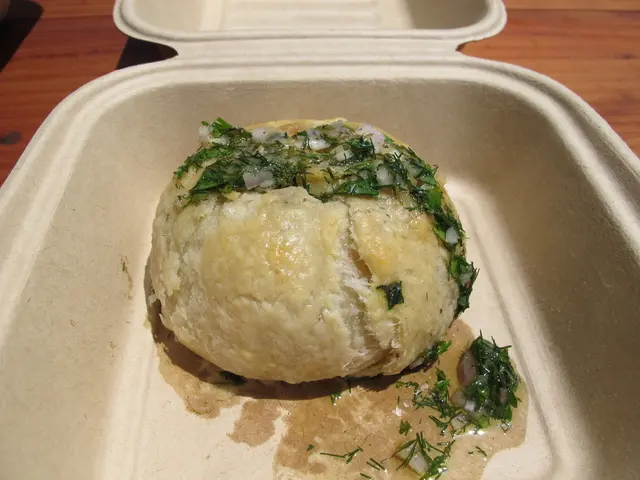Traditional Cooking Secrets: Savoring the Deep-Rooted Taste of Every Dish
A Journey Through Time, One Bite at a Time
Your average home-cooked meal isn't just fuel for the body; it's a journey through history, a showcase of cultural legacy, and a portal to explore the gastronomic journeys of our forebears. Each ancient recipe that's still around offers us a unique peek into the past, revealing tales of cultural evolution, adaptation, and tradition. Let's delve into how these well-loved recipes weave the rich tapestry of tradition and history into every delicious morsel.
Cooking: A Multicultural Canvas
Cooking is more than merely preparing food; it's an art form that transcends borders and cultures. Beyond satisfying hunger, it paints vivid narratives of those who came before us. Various cultures approach cooking in distinct ways, which is manifest in their traditional dishes. Through these practices, we can learn about a region's geography, climate, and societal norms.
Consider Italy, renowned for its pasta but also its diverse regional specialties. Up north, butter and rice dominate due to their availability, leading to creamy risotto dishes. Contrastingly, southern regions rely heavily on tomatoes, olive oil, and fresh herbs. Each dish from these regions is steeped in local history, retelling the story of the land and the people who harvested its offerings.
The Family Connection
Family plays a pivotal role in preserving these recipes. Traditions are preserved as each generation teaches the next how to stir, fold, and season with love and precision. Think of your grandmother in her kitchen, her nimble fingers precisely measuring ingredients for that special holiday dessert. It's more than a recipe - she imparts a piece of herself, and of her ancestors, to you.
Recipes have often been family secrets, lovingly safeguarded within the confines of home and shared only with close kin. However, as families disperse geographically, the transmission of these skills becomes an essential tool for maintaining connections across generations and distances. In essence, each shared recipe is a story that is passed down, linking parents, grandparents, and offspring to their historical roots.
Culinary History and Genealogy
Ever pondered about your ancestry? Delving into genealogy can provide insights not only about who your ancestors were but also about what they ate. Genealogical research can reveal crucial details, such as where your great-grandparents probably lived and the foods they likely devoured.
Food narrates its own family stories, and many genealogists have discovered intriguing connections between their family trees and their culinary practices. For example, a family from Eastern Europe may find that their cherished pot of borscht is not only a treat but also a cultural marker, a connection to their Ukrainian or Russian heritage.
Cultural Diplomacy through Cuisine
Time-honored recipes serve as cultural ambassadors, bringing people together through shared experience and mutual appreciation. Consider how a communal meal can break down barriers, invite discourse, and foster friendships between strangers. When people share a meal prepared using ancestral recipes, they are truly participating in a rich cultural exchange.
A dish can introduce new flavors and ideas to those unfamiliar with a culture, offering a starting point for learning and understanding different traditions. For instance, the rise in popularity of sushi globally provided a taste of Japanese culinary art and sparked interest in broader Japanese culture.
Embracing a Multifarious Palate
The allure of time-honored recipes lies in their ability to transcend borders and introduce us to a world of flavors that may otherwise remain alien. As cultures intermingle and influence one another, recipes evolve, incorporating aspects from various cuisines. This fusion of flavors not only tickles our taste buds but also promotes a greater appreciation for cultural diversity.
Take, for example, the integration of traditional Mediterranean ingredients into modern American dishes. The marriage of Greek feta cheese with Mexican avocados in a fresh salad illustrates how food can serve as a melting pot of cultural elements, celebrating the diversity and richness of the human experience.
Resurrecting Hidden Treasures
One intriguing aspect of revisiting culinary history involves rediscovering forgotten ingredients. As our food systems have globalized, certain ingredients have been overshadowed by more accessible or commercialized options. However, there's an increasing interest in rediscovering these hidden gems, not only for their unique tastes but also for their historical significance.
Enter ancient grains like einkorn and farro, now making a comeback in kitchens worldwide. These grains not only provide a multitude of nutritional benefits but also connect us to the dietary practices of early civilizations. By incorporating them into modern recipes, we bridge the past and present, unearthing flavors that tell ancient stories.
Protecting Culinary Traditions in the Digital Age
The flood of globalization and technological advancement has indisputably altered how we relate to tradition. Today, we're a touchscreen tap away from countless recipes, videos, and food blogs from around the world. While this unfettered access is a boon for culinary exploration, it also presents a risk to unique family traditions that might be lost as we gravitate towards homogeneity in our tastes.
Thankfully, there's growing appreciation for slow food and the preservation of culinary heritage. Events like cooking classes focused on indigenous foods, international food festivals, and organizations dedicated to culinary history are galore, demonstrating a collective effort to honor and protect our diverse culinary traditions.
Creating Your Gastronomic Legacy
If you haven't started creating your culinary legacy yet, there's no better time than the present. Explore your family's history, document those recipes, ask your elders the tales behind each dish - your curiosity might just uncover the foundation of your own cultural identity.
And as you record these age-old customs, you'll not only preserve them for future generations but also cherish the comforting assurance they provide, knowing that no matter where you roam, the essence of home is always a stone's throw away.
So, what will you cook next? Whatever it is, remember to season generously with history!
- Various traditional dishes from different cultures, like Italy's regional specialties, are steeped in local history, retelling the story of the land and the people who harvested its offerings.
- A shared recipe, such as your grandmother's special holiday dessert, is a story that is passed down, linking parents, grandparents, and offspring to their historical roots.
- Food narrates its own family stories, and many genealogists have discovered intriguing connections between their family trees and their culinary practices, such as a family from Eastern Europe discovering that their cherished pot of borscht is a cultural marker of their Ukrainian or Russian heritage.







